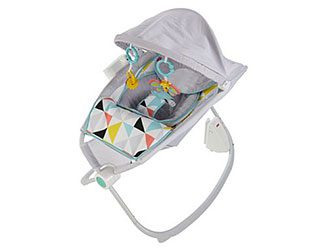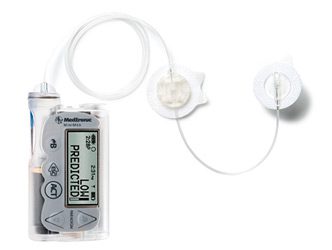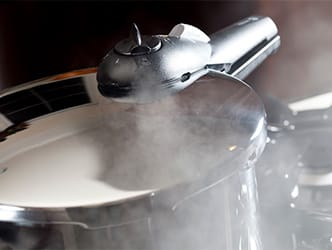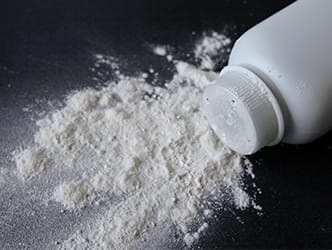You trust the products you use every day to do their jobs safely and effectively. Unfortunately, products from motor vehicles to household appliances can contain dangerous defects. A defective product can inflict severe injuries and harm on consumers, turning lives upside-down in a matter of seconds.
When you’re injured by a defective product, a personal injury attorney in Chicago can help you seek justice and compensation. At Meyers & Flowers, we handle cases involving faulty goods that cause harm to consumers. Our attorneys can review your case, help you understand your rights, and hold a manufacturer accountable for your losses. Contact us to start with a free consultation at our local Chicago law office.
Table of Contents
- Why Choose Meyers & Flowers
- Product Liability Law in Chicago
- Illinois Strict Liability Rules
- Common Types of Defective Products in Chicago
- Who Can Be Held Legally Liable for Product Liability Claims
- Types of Product Defects
- How Do I Prove My Product Liability Claim
- What Are Some Product Liability Defenses
- What Type of Compensation Is Available in Chicago Product Liability Cases
- Do I Need a Product Liability Attorney in Chicago
- Contact Us
- Our harmful Product Cases
Why Clients Choose Our Product Liability Lawyers
- A long history of success. Our attorneys are leaders in Chicago product liability law, with a track record of positive settlements and verdicts. For example, we achieved one of the largest global medical device settlements ($3 billion) in a defective hip implant case.
- Commitment to clients. We make meaningful connections with our clients and ensure they have everything they need to get through difficult times. Our Chicago product liability attorneys take the time to dedicate individualized attention to each and every case and client.
- Experience. Our law firm is comprised of top trial attorneys in Chicago, led by Illinois Super Lawyer and former President of the Illinois Trial Lawyers Association Peter J. Flowers and fourth-generation attorney Ted A. Meyers. We have what it takes to win.
- Affordable legal fees. Our product liability lawyers in Chicago operate on a contingency fee basis. This means you’ll pay us $0 upfront and $0 if we do not win your case. If we do secure compensation for your losses, we’ll deduct our fee as a percentage.
Meyers & Flowers: Protecting Consumer Rights in Defective Product Cases
Product liability cases can be complex, requiring knowledge of both legal and technical aspects. An experienced Chicago product liability attorney will investigate your claim, gather evidence and build a strong case on your behalf. They’ll navigate the legal system to pursue fair compensation for your medical bills, lost wages, and pain and suffering.
At Meyers & Flowers, we have a proven track record of successfully representing clients in product liability cases. Our team of skilled Chicago product liability attorneys is ready to fight for your rights and ensure you receive the compensation you deserve. Book a consultation with us today to discuss your case and explore your legal options.
Whether drugs, medical products or anything else, defective products can create a huge negative impact in one’s life. We’re here to ensure you get the compensation you deserve after falling prey to a defective product.
How a Chicago Product Liability Lawyer Can Help
If you’ve suffered injuries or damages because of a defective product in Chicago, a product liability attorney in Chicago can assist you in many ways throughout the process of holding someone accountable and getting the financial compensation you deserve. A product liability lawyer in Chicago can carefully evaluate your incident to search for grounds to file a product liability claim.
From there, your Chicago product liability lawyer can identify liable (legally and financially responsible) parties and complete the confusing paperwork required to initiate a product liability claim on your behalf. A Chicago product liability attorney will have connections to experts, including engineering and medical experts, to help you prove your product liability case.
If an insurance company offers a settlement to resolve your claim, your lawyer can handle negotiations and counteroffers to optimize the amount you receive. Although most product liability claims reach settlements, an attorney can also fight for justice in the courtroom, if necessary. Hiring the right Chicago product liability attorney can increase your chances of success while allowing you to focus on what matters: recovering.
Product Liability Law in Chicago
Product liability law in Chicago protects consumers from defective or dangerous products. It outlines manufacturers’ responsibilities and provides legal recourse for those injured by faulty goods. Under these laws, a consumer who has been injured due to a defective product can file a legal claim known as a product liability suit to hold those responsible for the unsafe item accountable.
Illinois Product Liability Act
The Illinois Product Liability Act governs these cases, setting standards for evidence and defining key terms. It also outlines defenses available to manufacturers, such as misuse of the product or assumption of risk by the consumer.
Under this law, a consumer with injuries or damages due to a product that is dangerous or contains a defect has the right to seek financial compensation, often without having to prove fault or negligence.
Federal regulations, including those from the Consumer Product Safety Commission, also play a role in Chicago product liability cases. These set safety standards for various products and can influence the outcome of your claim.
Modified Comparative Negligence
Illinois follows the modified comparative fault rule, which affects your ability to recover damages. If you’re found to be more than 50 percent responsible for your injury, you cannot collect compensation. If less than 50 percent of the fault is allocated to you, your financial recovery will be reduced by an equivalent percentage.
Statute of Limitations
The statute of limitations for product liability claims in Illinois is generally two years from the date of injury. However, there’s also a statute of repose that bars claims filed more than ten years after the product was first sold. This means that even if you don’t discover your injuries or their connection to a defective item right away, you have no more than ten years to take legal action.
Illinois Strict Liability Rules
In Illinois, strict liability for product defects allows an injured party to recover damages from a manufacturer or seller without the need to prove negligence or the failure to use proper care. This legal doctrine holds parties in the distribution chain responsible for injuries caused by defective products that are unreasonably dangerous.
To establish a strict liability claim in Illinois, the plaintiff must prove:
- Defective condition: The product was in a defective condition when it left the defendant’s control.
- Unreasonably dangerous: The defect made the product unreasonably dangerous to the user or consumer.
- Causation: The defect was the proximate cause of the plaintiff’s injury.
- Foreseeable use: The product was used in a manner reasonably foreseeable by the manufacturer.
Under Illinois law, purely economic losses (such as lost profits or the cost to repair or replace the defective product) are generally not recoverable under strict liability in tort. These losses may be pursued under breach of warranty or contract claims instead.
Other Grounds for Filing a Product Liability Claim
If the strict product liability law does not apply, you may still have grounds to recover financial compensation through a claim based on a different legal doctrine. One possibility is a breach of warranty or contract, which means the product that injured you failed to meet the manufacturer’s promises or guarantees.
Another option is a personal injury claim based on negligence. These cases require proof that the manufacturer, seller, or another party fell short of their duty or standard of care and that this resulted in harm to the consumer. An example of negligence is a manufacturing facility skipping safety tests or concealing records of discovered issues to debut a product sooner.
Common Types of Defective Products in Chicago
Many different types of products can lead to claims due to defects, injuries, and harm to consumers. In Chicago, some of the most common defective and dangerous products include:
- Motor vehicle parts, such as brakes and seat belts
- Medications and medical devices
- Children’s toys and clothing
- Playground structures
- Furniture
- Household appliances
- Heaters and furnaces
- Cooking products and kitchen appliances
- Cleaners and chemicals
- Pesticides
- Cosmetics and personal care products
- Electronics and batteries
- E-cigarettes
- Construction and industrial equipment
- Recreational equipment
- Food and beverages
If you are hurt by any type of product in Illinois, discuss the possibility of bringing a lawsuit by contacting an attorney at Meyers & Flowers for a free case review.
Who Can Be Held Legally Liable for Product Liability Claims?
Product liability claims can target multiple parties in the supply chain. Manufacturers are often held responsible for defects in design, production or inadequate warnings.
Other examples include:
- Retailers and distributors may also be liable, even if they didn’t create the defect. They have a duty to ensure the products they sell are safe for consumers.
- Component manufacturers can be held accountable if their part caused the issue. This applies even if they didn’t assemble the final product.
- Importers of foreign-made goods can face liability in the U.S. market. For legal purposes, they’re considered the manufacturer.
- Brand-name companies may be liable for products made by others under their name, including items produced through licensing agreements.
- Sellers of used products can sometimes be held responsible, especially if they refurbished or modified the item.
You should note that liability can be shared among multiple parties. Each may be assigned a percentage of fault based on their role in the product’s journey to market.
Understanding who’s liable helps you pursue your claim effectively. A product liability attorney can guide you in identifying all potentially responsible parties.
Types of Product Defects
Product liability claims in Chicago typically involve one of three types of product defects. These defects can arise at any stage in the process of creating, producing, and distributing products.
Design Defects
Design defects occur when a product’s blueprint or concept is inherently flawed. These issues affect all items in a product line, not just individual units. Examples include:
- Cars with a high center of gravity are prone to rollovers
- Electrical appliances with inadequate insulation
- Children’s toys with small parts that pose choking hazards
To prove a design defect, you must show that the product’s risks outweigh its benefits or that a safer alternative design was feasible.
Manufacturing Defects
Manufacturing defects happen during the production process. These flaws cause a product to deviate from its intended design. Common examples are:
- Contaminated food or medications
- Vehicles with faulty brake systems
- Electronics with improper wiring
Unlike design defects, manufacturing issues usually affect a limited number of products. You’ll need to demonstrate that the defect existed when the product left the manufacturer’s control.
Marketing and Label Defects
These defects involve failures to provide adequate warnings or instructions for safe use. They can include:
- Insufficient safety warnings on power tools
- Unclear dosage instructions on medications
- Failure to disclose potential allergens in food products
To establish liability, you must prove that the lack of proper information directly led to injury or damage. Manufacturers have a duty to warn consumers about non-obvious risks associated with their products.
How Do I Prove My Product Liability Claim?
In most product liability cases, the strict liability law means that the victim does not have to prove negligence to qualify for financial compensation. However, you must still provide evidence supporting the required elements of your claim.
To prove your product liability claim in Chicago, you need to establish several key elements:
- First, demonstrate that the product was defective when it left the manufacturer’s control. This could involve showing a design flaw, manufacturing defect or inadequate warnings.
- Next, provide evidence that you used the product as intended or in a reasonably foreseeable manner. Document how the defect directly caused your injury or damages. Keep all relevant records, including medical bills and repair costs.
- Consider bringing in expert testimony, which often plays a crucial role in these cases. Engineers, safety specialists or medical professionals can offer insights into the product’s defects and their consequences.
Preserve the product in its post-incident condition if possible. This physical evidence can be critical for your case. Examples of crucial evidence to gather include the following:
- Product packaging and instructions
- Photographs of the defective product and your injuries
- Witness statements
- Medical records and bills
- Any correspondence with the manufacturer
Remember, Illinois follows a strict liability doctrine for product defects. This means you don’t need to prove negligence, only that the product was unreasonably dangerous.
What Are Some Product Liability Defenses?
Your product liability claim may be denied for many reasons by the insurance provider of the manufacturer or distributor. Defendants in Illinois may raise several defenses:
- Assumption of risk: The plaintiff knew of the defect and voluntarily exposed themselves to it.
- Product misuse: The product was used in a way not intended or foreseeable by the manufacturer.
- Comparative fault: The plaintiff’s negligence contributed to their injury, which may reduce the damages awarded.
- Statute of limitations and repose: To reiterate, plaintiffs generally have a two-year limit from the date of injury to file a claim. According to the statute of repose, no action can be brought more than 12 years after the product was first sold, leased or delivered.
It is important to be aware of potential defenses that may arise during your product liability claim and adequately prepare for them by working with a personal injury attorney.
What Type of Compensation Is Available in Chicago Product Liability Cases?
If you’ve been injured by a defective product in Chicago, you may be eligible for various types of compensation. Medical expenses are often a primary focus, covering costs for treatments, surgeries, medications and ongoing care related to your injury.
Other examples of potential compensation include the following:
- Lost wages can be recovered if your injury prevented you from working. This includes both past and future earnings if your ability to work has been permanently affected.
- Pain and suffering damages compensate for physical discomfort and emotional distress caused by the injury. These non-economic damages can be substantial in severe cases.
- Property damage may be claimed if the defective product caused harm to your belongings. This could include repair or replacement costs for damaged items.
- In cases of extreme negligence, punitive damages might be awarded. These are intended to punish the manufacturer and deter similar behavior in the future.
- Rehabilitation costs, including physical and occupational therapy, can be part of your compensation package. This ensures you receive the necessary support for recovery.
- If your injury has affected your relationship, loss of consortium damages may be available to your spouse. These damages address the impact on companionship and marital benefits.
Find out how much your product liability claim might be worth by speaking to an attorney at Meyers & Flowers. We will accurately determine the value of your claim and use aggressive legal strategies to recover as much compensation as possible for your losses.
Do I Need a Product Liability Attorney in Chicago?
Product liability cases can be complex and challenging to navigate on your own. A skilled attorney can provide crucial support and assistance throughout the legal process.
Case Evaluation and Legal Strategy
- A product liability attorney in Chicago will assess the merits of your case. For example, they’ll examine the circumstances surrounding your injury and determine if you have grounds for a claim.
- If you have grounds, they’ll develop a tailored legal strategy.
- Your attorney will identify potential defendants, which may include manufacturers, distributors or retailers.
- They’ll also determine the most appropriate legal theories to pursue, such as negligence, strict liability or breach of warranty.
With their experience, you’ll clearly understand your case’s strengths and potential challenges.
Evidence Gathering and Analysis
Collecting and analyzing evidence is crucial in product liability cases. Your attorney will:
- Obtain and review relevant documents
- Interview witnesses
- Consult with expert witnesses
- Analyze product design and manufacturing processes
- Investigate similar incidents or recalls
This thorough approach helps build a strong foundation for your case. Your attorney will also ensure all evidence is properly preserved and admissible in court.
Representation in Settlement Negotiations and Trials
Your attorney will represent your interests in settlement negotiations with the opposing party. They’ll use their negotiation skills to seek fair compensation for your injuries and losses.
- Your attorney will prepare for trial if a settlement can’t be reached. This includes:
- Drafting and filing necessary legal documents
- Developing compelling arguments
- Preparing witnesses for testimony
- Presenting evidence effectively in court
With skilled representation, you’ll have a better chance of achieving a favorable outcome in your product liability case.
Why Choose Meyers & Flowers as Your Product Liability Attorneys in Chicago?
Your case deserves personalized attention and legal proficiency. At Meyers & Flowers, you’ll work directly with seasoned lawyers who understand the intricacies of product liability law. We utilize cutting-edge technology and employ a network of expert witnesses to build strong cases for our clients.
We’re committed to fighting for your rights and maximizing your compensation. Our attorneys have received recognition from prestigious legal organizations, including Super Lawyers and The National Trial Lawyers Top 100. Don’t face this challenging situation alone – book a consultation with Meyers & Flowers today to discuss your product liability case.
Contact an Experienced Product Liability Attorney in Chicago | Request a Free Consultation
If you or someone you love was hurt by a defective or dangerously designed product in Chicago, don’t hesitate to contact Meyers & Flowers for legal advice. We know how to handle product liability claims under Illinois and federal law to the greatest possible benefit of our clients. We will fight for maximum financial compensation while you focus on your well-being.
Request a free consultation today when you call our Chicago law office at (630) 232-6333.
Harmful Product Cases:
Major Surgical System
Inclined Sleeper Lawssuits
Defective Medical Products
Medtronic O-Arm O2 Imaging System
Medtronic Recall
Pressure Cooker Litigation
Talcum Powder
Acist Kodama Intravascular Ultrasound Catheter Recall Litigation
Paraquat Herbicide Lawsuits
EzriCare Artificial Tear Recall









